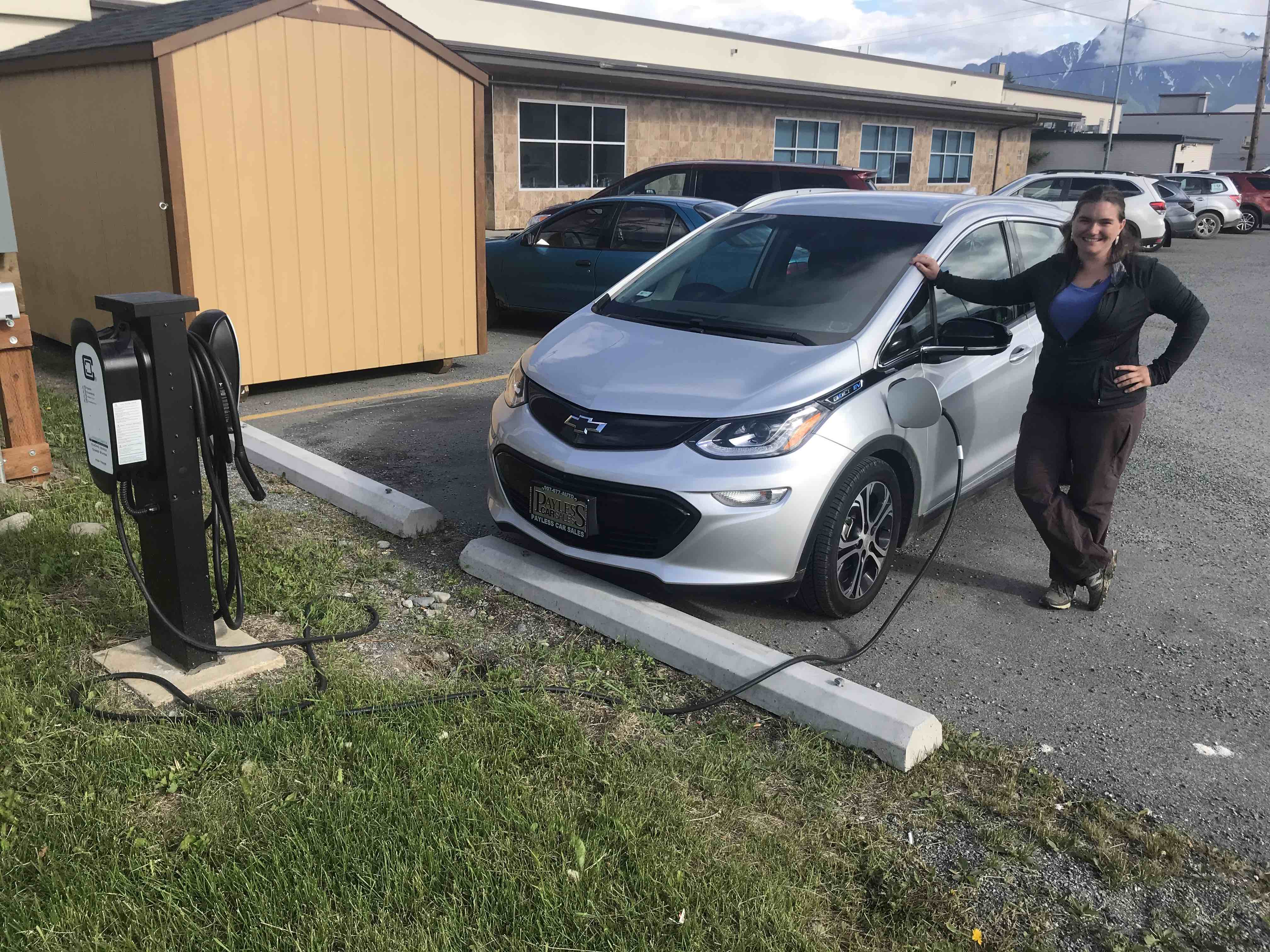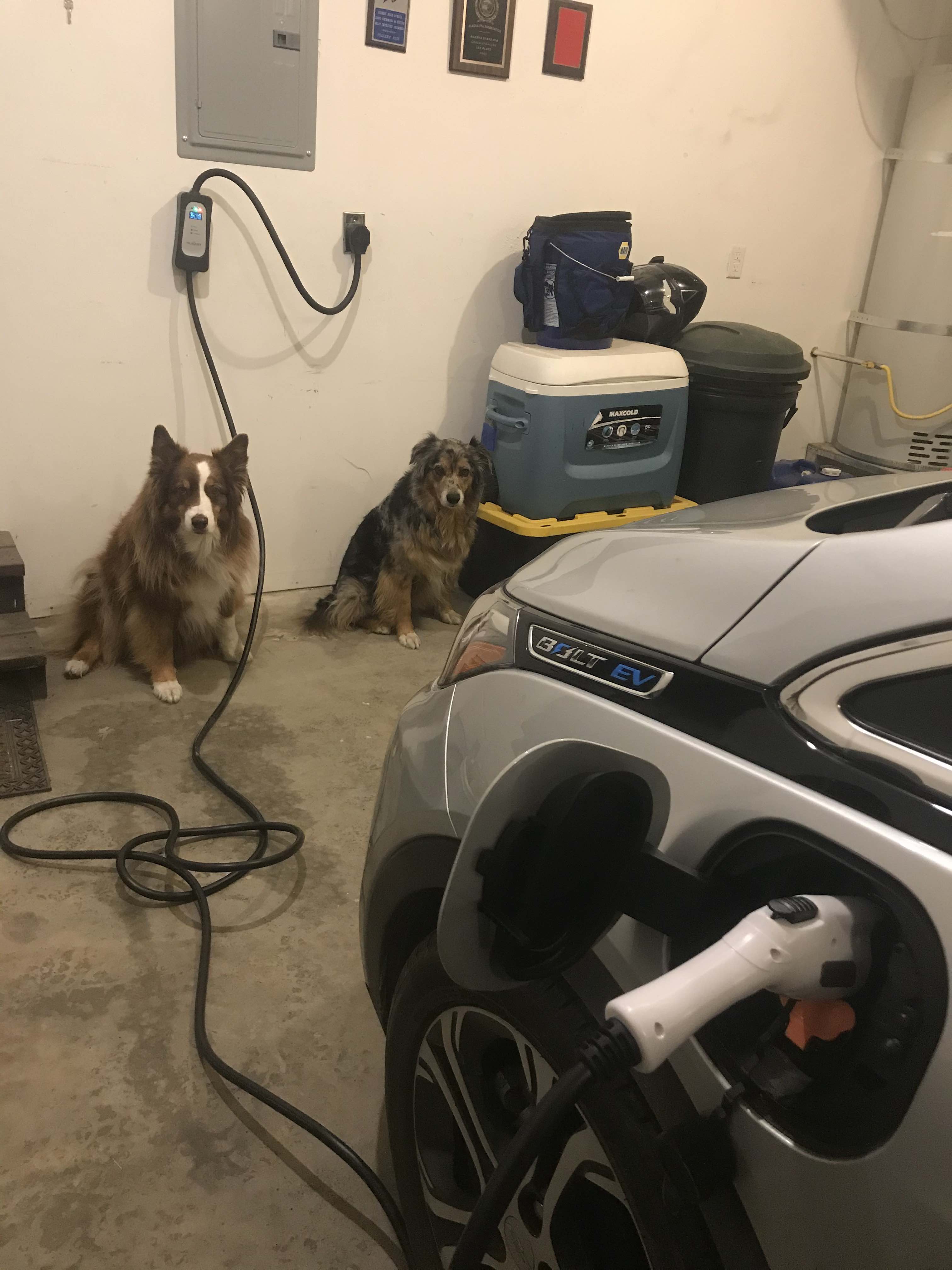1. Similar purchase price. I bought a used 2017 Chevrolet Bolt in Anchorage for $23,800 which is not that much more than a similar used 4-door hatchback fuel efficient vehicle. I was going to need a new vehicle soon anyway, so I had already budgeted for the initial investment and financing.

2. Long term savings. My previous car had good fuel efficiency (30-35 mpg) but was older and needing more repairs more often. With an EV, not only do I have almost no maintenance, I am saving money on fuel. You can see in the graph here that my electricity usage went up some from charging at home, but it is costing me about 5 cents mile compared to 6 cents mile in my previous car. When fuel prices go up, savings will only increase.
3. Reduced carbon footprint. While charging from home, I’m using electricity from my utility (Matanuska Electric Association) that produces 80% of its power from fossil fuels (in this case, natural gas). However, I still am emitting less carbon than my previous car which ran off diesel. Research indicates that even if your electricity comes from coal (looking at you, Fairbanks), you still are reducing your carbon footprint compared to an internal combustion engine. In places like Kodiak, Sitka or Juneau that produce all their electricity from renewable energy sources, it’s completely renewable to drive. As the grid gets more and more renewable energy, my carbon footprint will continue to decrease. Learn more about current work to reform the Railbelt which will allow more renewables here.
4. More charging stations in the near future. Although there aren’t that many public charging stations in the Mat-Su (Turkey Red – right – and the Chevrolet Dealership are the only ones I know of), Alaska has received $8.125 million from the Volkswagen Diesel Settlement and nearly $1 million of that is going towards putting public charging stations on the main road system. The Alaska Electric Vehicle Association is educating business owners about the cost of adding a charging station. The Alaska Center for Energy and Power (ACEP) published a spreadsheet that businesses can use to calculate the cost of having a charger here. So although it’s hard to charge away from home right now, soon that will change. Update November 2021: Learn about the expanding charging infrastructure on the road system here.


5. Plenty of range to commute. I need about 120 miles of range to drive to Anchorage and back comfortably. The maximum range of my Bolt at full charge is 330 miles, which decreases some at highway speeds. Driving in the winter and using the heater will decrease that even more, but research and anecdotes from other EV drivers suggests that I should still have plenty of range to commute. Using my 240-volt outlet and charger (also called a “level 2 charger”) in my heated garage (left), I can easily go from an empty to full charge overnight, so even if I start commuting 4 or 5 days a week, I won’t have any problem using my EV.
Meanwhile, you can learn more about EVs in Alaska by watching our Speaker Series presentation on that topic in October 2021 on YouTube here or listen to Episode 1 of our podcast “Renewable Radio.” You can also watch the recordings from the Alaska Electric Vehicle virtual workshop that was held in June 2020 here.